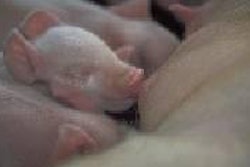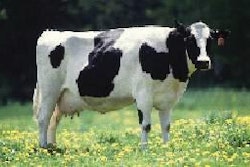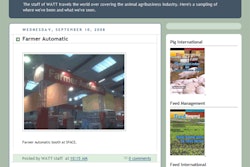Extensive British investigations have identified feed-bin management as an important contributor to keeping meat free of residues. Failure to sequence storage bins correctly or to empty and clean them on schedule is known to have occurred on a number of poultry units. As a result, the chickens produced on these sites were more likely to show traces of the anticoccidial treatment that the birds had received during their growing phase.
Details presented to the British Pig and Poultry Fair in May referred to a national analysis of samples of chicken livers for residues of the anticoccidial compound called nicarbazin. A possible problem had surfaced at the end of the 1990s when levels of over 200 mcg of nicarbazin per kilogram of liver tissue were found in a significant proportion of samples in the United Kingdom (UK), despite a requirement for the anticoccidial to be withdrawn from the bird's feed five days before slaughter. In 1998, for example, 25.5 percent of samples tested positive for nicarbazin in the range 200-7200 mcg/kg, although 2006 results indicated only 8.5 percent of positive samples in the range 210-3100 mcg/kg.
Detectable residue
The latest findings of the National Surveillance Scheme, reported by the British Poultry Council and National Farmers Union, suggest that this improvement has continued. Their report, "Reducing the incidence and levels of nicarbazin residues in British chicken," is the result of a joint government-industry initiative facilitated by the UK's Food Standards Agency. The full report can be seen at www.food.gov.uk. It covers a period from February 2007 to January 2008, during which 268 poultry producers completed a survey questionnaire about their feed management and husbandry practices. The responses could then be linked to data from the processing plant on the incidence of nicarbazin-positive liver samples for broiler chickens from these sites.
The survey established that 94 percent of the respondents used nicarbazin. It also revealed a number of factors relating to feed-bin management on broiler production sites that might cause detectable nicarbazin residue in the chicken's liver, although none gave a statically significant effect.
Samples showing relatively low-level residues in the range of 200-1000 mcg/kg liver tended to occur from sites where the feed storage bin was more than 15 years old and also where feed bins were not emptied completely before receiving a top-up. Another risk factor seemed to be having different feeding systems in various parts of a multi-house site, presumably because the lack of standardisation encouraged more errors in feed withdrawal observance.
Residues over 1000 mcd/kg liver were more likely when birds near slaughter time had been exposed to feed containing nicarbazin over a period of several days instead of being given the drug-free withdrawal feed. Such incidences were linked to placing newly arrived feed in the wrong bin, but some connections to feed type were also proposed. For example, the investigators say non-medicated pellets may have been put into the same silo as starter feed crumbs containing nicarbazin. They also warn of a possible link to allowing pellets to become damp in storage so they flow less freely and therefore have more chance of lingering in the feeders at a time when non-medicated feeding should commence.
By contrast, the number of feed bins appeared to be unrelated to the level or incidence of nicarbazin residues found in liver samples from the broilers from that site. So the report recommends more of the same in the sense of continuing the on-farm feed management practices that have helped UK poultry producers to reduce nicarbazin resides over the last decade. The amount of anticoccidial-containing feed required must be known by the farm manager, it insists, while the storage system whether in single or double bins must ensure that the nicarbazin feed is completely emptied more than five days before the birds are taken for slaughter. It also reveals that an on-farm test will be available soon for testing feed in the feeder, as a further help to ensuring that the broiler unit is following the protocol to prevent residues in the poultry products.





.jpg?auto=format%2Ccompress&fit=crop&h=167&q=70&w=250)











